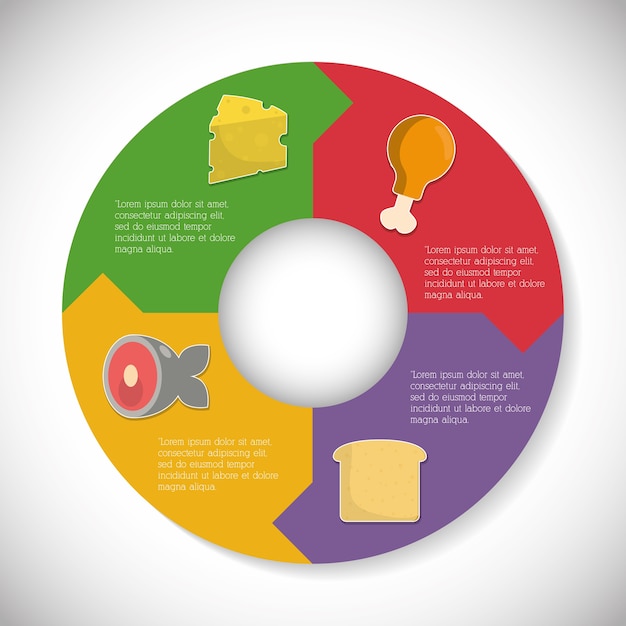Budgeting for Success: Your Personalized Financial Plan

Budgeting for Success: Create a Personalized Spending Plan and Achieve Your Financial Goals involves crafting a detailed financial roadmap that aligns with your income, expenses, and long-term objectives, providing control over your finances for better financial well-being.
Achieving financial goals often seems daunting, but with a well-structured approach, **Budgeting for Success: Create a Personalized Spending Plan and Achieve Your Financial Goals** becomes attainable. This involves a deep understanding of your financial landscape and a tailored strategy to manage resources effectively.
Understanding the Basics of Budgeting
Budgeting is the cornerstone of financial stability, ensuring you’re aware of where your money goes and how to make it work best for you. It’s not just about restricting spending; it’s about making informed decisions that align with your priorities and long-term financial wellness.
Why is Budgeting Important?
Budgeting offers control over your finances, helping you avoid debt and save for the future. It provides a clear picture of your financial health, enabling you to adjust your spending habits and achieve financial goals.
Key Components of a Budget
A budget typically includes income, expenses (both fixed and variable), and savings goals. Understanding these components helps create a realistic and effective spending plan that caters to your unique needs and aspirations.

Once you understand those key concepts, its time to put it into practice.
- Assess your financial situation: Know your income, debts, and regular expenses.
- Set clear financial goals: Define both short-term and long-term objectives.
- Track your spending: Monitor where your money is going to identify areas for adjustment.
- Review and adjust regularly: Adapt your budget as your circumstances change.
In summary, understanding the basics of budgeting provides the foundation for financial success, guiding you toward informed decisions and a secure financial future. Budgeting is more than just numbers; it is a path to taking control of your life.
Setting Clear Financial Goals
Defining your financial goals is essential to give purpose and direction to your budget. These goals can range from saving for a down payment on a home to paying off debt or investing for retirement. Without clear objectives, it’s challenging to stay motivated and disciplined with your budget.
Short-Term vs. Long-Term Goals
Short-term goals are typically achievable within a year and might include saving for a vacation or paying off a credit card balance. Long-term goals, such as retirement savings or buying a house, require more sustained effort over several years.
How to Prioritize Your Goals
Prioritize your goals based on urgency and importance, considering factors such as debt repayment, emergency savings, and retirement planning. This prioritization helps allocate your resources where they matter most.
Here are some steps to help effectively prioritize your goals:
- List all your goals: Write down every financial objective you have.
- Rank them by importance: Determine which goals are most critical.
- Consider the timeline: Distinguish between short-term and long-term goals.
- Break down large goals: Divide them into smaller, manageable steps.
Clearly defined financial goals provide the motivation and direction needed to create a successful budget. By setting realistic objectives and prioritizing them effectively, you’ll be well on your way to achieving financial stability and security. Remember, having a clear vision is half the battle won.
Tracking Your Income and Expenses
Accurately tracking your income and expenses is crucial for effective budgeting. It provides insights into where your money is coming from and where it’s going, allowing you to make informed decisions about your spending habits. Without this information, it’s difficult to identify areas for adjustment and savings.
Tools for Tracking Expenses
Various tools are available for tracking expenses, including budgeting apps, spreadsheets, and manual methods like notebooks. Each tool has its pros and cons, so choose one that fits your lifestyle and preferences.
Categorizing Your Spending
Categorizing your spending into different areas such as housing, transportation, food, and entertainment helps you see where your money is being allocated. This categorization makes it easier to identify areas where you can cut back on spending.

When tracking, you can use your expenses to identify improvements in your budget.
- Use budgeting apps: Apps like Mint or YNAB can automate the tracking process.
- Create a spreadsheet: Manually enter income and expenses into a spreadsheet.
- Keep receipts: Collect receipts to ensure accurate tracking.
- Review regularly: Set aside time each week to review your spending.
Tracking your income and expenses offers invaluable insights into your financial habits, which is essential when Budgeting for Success: Create a Personalized Spending Plan and Achieve Your Financial Goals. By using the right tools and methods, you can gain a clear picture of your financial flow, enabling you to make informed decisions and achieve your financial objectives.
Creating a Realistic Spending Plan
A realistic spending plan turns your budgeting insights into actionable steps. It involves allocating your income to different spending categories in a way that aligns with your financial goals and priorities. A well-crafted spending plan helps you control your finances and avoid overspending.
The 50/30/20 Rule
The 50/30/20 rule suggests allocating 50% of your income to needs, 30% to wants, and 20% to savings and debt repayment. This simple guideline helps create a balanced spending plan that covers essential expenses while also allowing for enjoyment and financial security.
Adjusting Your Spending Plan
Your spending plan should be flexible and adaptable to changing circumstances. Regularly review and adjust your plan based on your progress toward your goals, changes in income, and unexpected expenses.
Follow these strategies to ensure your spending plan is effective:
- Determine your needs: Essential expenses like housing, food, and transportation.
- Allocate for wants: Discretionary spending like entertainment and dining out.
- Prioritize savings and debt repayment: Allocate at least 20% to these areas.
- Regularly review and adjust: Adapt your plan as your financial situation changes.
Developing a realistic spending plan transforms your financial insights into tangible actions. By carefully allocating your income and regularly adjusting your plan, you can align your spending with your financial objectives, ultimately fostering financial well-being and security. It serves as a guide to help make the best choices.
Dealing with Unexpected Expenses
Unexpected expenses are an inevitable part of life, and preparing for them is crucial for maintaining financial stability. Without a plan to handle these unforeseen costs, you risk derailing your budget and falling into debt. Having strategies in place ensures you can weather these financial storms.
Building an Emergency Fund
An emergency fund is a savings account dedicated to covering unexpected expenses such as medical bills, car repairs, or job loss. Aim to save at least three to six months’ worth of living expenses in your emergency fund.
Strategies for Handling Unexpected Costs
In addition to an emergency fund, consider strategies like setting aside a small amount each month for unexpected expenses or using credit cards responsibly for emergencies, ensuring you pay off the balance promptly.
Here are some effective methods for dealing with unexpected expenses:
- Create an emergency fund: Save three to six months’ worth of living expenses.
- Set aside monthly: Allocate a small amount each month for unexpected costs.
- Use credit cards wisely: Use credit cards for emergencies, but pay off the balance quickly.
- Review your insurance coverage: Ensure you have adequate coverage to minimize out-of-pocket expenses.
Preparing for unexpected expenses is vital for maintaining financial resilience. By building an emergency fund and implementing smart strategies, you can navigate unforeseen costs without jeopardizing your budget or financial stability. A plan for emergencies can provide peace of mind and secure your financial future.
Reviewing and Adjusting Your Budget
Budgeting is not a one-time task but an ongoing process. Regularly reviewing and adjusting your budget is crucial to ensure it remains aligned with your financial goals and changing circumstances. This continual assessment allows you to fine-tune your spending habits and make necessary adjustments for long-term success.
Regular Budget Check-ins
Schedule regular check-ins, such as monthly or quarterly reviews, to track your progress and identify any areas where you’re falling short. These check-ins provide an opportunity to reassess your goals and make necessary adjustments to your spending plan.
Adapting to Life Changes
Life changes such as a new job, marriage, or the birth of a child can significantly impact your financial situation. Be prepared to adapt your budget to accommodate these changes, ensuring it continues to meet your needs and goals. Sometimes life changes can be a great opportunity for financial improvements as well!
When doing consistent check-ins, be sure to:
- Schedule regular reviews: Set aside time each month to review your budget.
- Track your progress: Compare your actual spending to your budgeted amounts.
- Identify areas for improvement: Look for opportunities to save more or reduce expenses.
- Adjust as needed: Modify your budget to reflect changes in your life or financial goals.
Consistent review and adjustment are essential to maintaining an effective budget. By scheduling regular check-ins and adapting to life’s changes, you can ensure that your spending plan remains aligned with your financial objectives, promoting long-term stability and success. When Budgeting for Success: Create a Personalized Spending Plan and Achieve Your Financial Goals, its important to remain responsible.
| Key Point | Brief Description |
|---|---|
| 🎯 Set Financial Goals | Clearly define goals for motivation. |
| 📊 Track Expenses | Monitor spending to identify areas for savings. |
| 💰 Create Spending Plan | Allocate income to needs, wants, and savings. |
| 🛡️ Emergency Fund | Prepare for unexpected expenses to avoid debt. |
What are the benefits of creating a budget?
Creating a budget helps you understand where your money is going, control your spending habits, and achieve your financial goals more efficiently.
How often should I review my budget?
It’s recommended to review your budget at least monthly to ensure it aligns with your current financial situation and goals, making necessary adjustments as needed.
What is the 50/30/20 rule?
The 50/30/20 rule is a budgeting technique that allocates 50% of your income to needs, 30% to wants, and 20% to savings and debt repayment.
How can I track my expenses effectively?
To track your expenses effectively, use budgeting apps, spreadsheets, or keep receipts to monitor where your money is going and identify areas for improvement.
What should I include in an emergency fund?
An emergency fund should include enough savings to cover three to six months’ worth of living expenses, helping you handle unexpected costs without jeopardizing your budget.
Conclusion
Budgeting for Success: Create a Personalized Spending Plan and Achieve Your Financial Goals involves several key steps, including setting financial goals, tracking income and expenses, creating a realistic spending plan, preparing for unexpected expenses, and consistently reviewing and adjusting your budget. By implementing these tactics, you can transform your finances and establish a more secure future.





